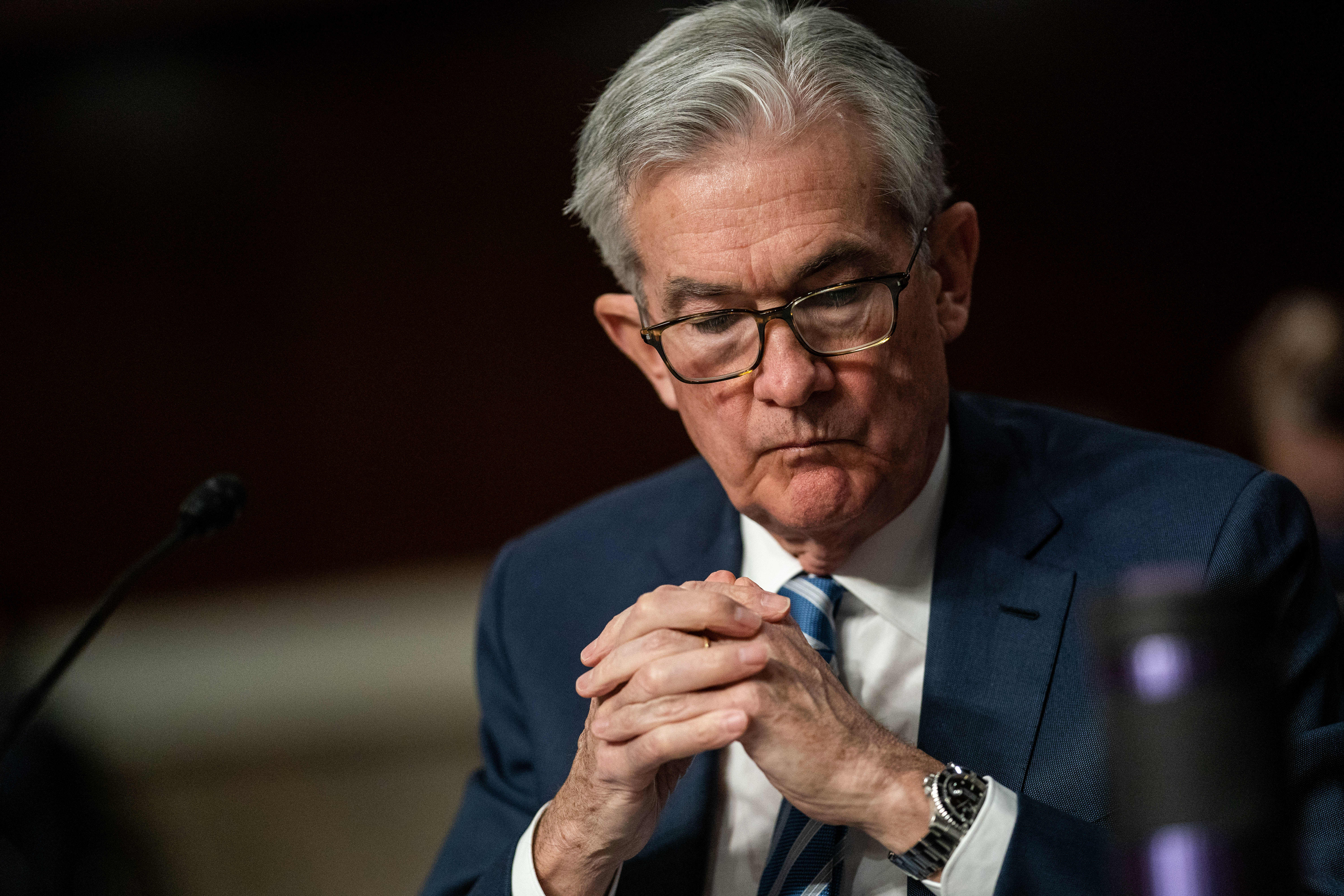Products You May Like
The outlook for Federal Reserve rate hikes after March may become less clear if Russia continues its incursion into Ukraine.
That’s because the tensions have pushed up the price of oil and gasoline, a major purchase for many Americans, and it’s the U.S. consumer that drives about 70% of the U.S. economy.
The prices of oil and other commodities have been rising on concerns that Russia’s troop movements into Ukraine and sanctions from the U.S. and allies could potentially lead to limited supplies. Russia is a major exporter of oil and natural gas. The country is also the largest exporter of wheat and palladium. Moscow is also a major player in nickel, aluminum and other metals.
“It’s really about oil rather than the other, wheat, palladium and nickel,” said Mark Zandi, chief economist at Moody’s Analytics. “Oil is probably up $10 or $15 a barrel because of the conflict… That will probably add, if sustained, about 30 or 40 cents a gallon to unleaded. That’s as much as a half-percentage point to year-over-year consumer inflation, and we’re already at 7.5%. My sense is it really complicates the Fed’s efforts to rein in inflation and get back to full employment.”
Higher energy prices
Consumers across the U.S. were paying an average $3.53 per gallon of unleaded gasoline Tuesday, up 90 cents from a year ago and 21 cents in the past month, according to AAA. Crude oil is up about 50% in the past year.
Economists said it will be the price of oil that could ultimately drive Fed policy. The jump in oil prices is first a catalyst for inflation, and eventually it could become disinflationary if the price move is so high and enduring that it drags on economic growth. If Russia launch a full-scale military invasion into Ukraine, prices could go much higher, energy analysts say.
“It makes things more complicated,” said Bruce Kasman, JPMorgan’s chief economist. “There is a scenario where the growth hit starts to get more substantial. There’s also scenarios where the price increases are not as damaging to growth and it’s feeding inflation.”
Loading chart…
Kasman expects the Fed will proceed with a quarter-point increase in the fed funds rate in March, and the Ukraine situation weakens the argument for a half-point hike. His forecast is for six more rate hikes over the balance of the year.
This is where the outlook becomes muddy for the central bank: On the one hand, a growth scare could slow the pace of hiking. On the other, economists say, the Fed may become even more aggressive if it sees a sharper pick-up in inflation.
“I certainly think oil today is standing about 30% over its fourth-quarter average,” said Kasman. “If you move up toward a 75%, 100% increase, which would be moving to $120 to $150 [per barrel], then I have to believe there’s enough damage here to have a negative impact on global growth.”
Zandi said the Fed’s focus currently is on taming inflation, which is much hotter and enduring than it had expected. He described a jump in oil prices to $150, as less likely and indicative of a “dark scenario,” but rising fuel prices could still get the Fed’s attention.
“I think it reinforces their instinct now to normalize policy quickly because they are focused more on inflationary effects than on the growth effects,” said Zandi. “The pandemic was a more supply shock and layer on top of it another oil price shock. We have two serious supply shocks hitting at the same time. That’s why this is so difficult for the Fed.”
A rate hike is still coming in March
Kasman said the Fed will not be deterred from beginning its rate hiking cycle in March since it believes it is behind the curve. “Where we’re going to be three or four months from now is really going to be about whether we see the prices keep going, and its impact on growth,” he said. He expects gross domestic product growth to average 3.6% this year.
Kasman also points out that the Fed is not used to raising rates during a period where oil prices are moving higher.
“It certainly does add pressure. To the extent that growth isn’t hurt, the higher inflation itself becomes a more medium-term problem,” he said. “On the other side of the coin, the fact the Fed is tightening, and we’re getting a negative supply shock, it’s magnifying the negative supply shock impact on growth as the Fed tightens into it. We haven’t seen this basically since Paul Volcker.”
The former Fed chairman was famous for his aggressive fight against inflation, raising the fed funds target rate to a peak of 20% in 1981. The Fed is about to raise interest rates from a current range of zero to 0.25%.
“From the point of view of the Fed reaction function, Greenspan, Bernanke, Yellen, when they saw oil prices moving up sharply, either it happened after they were done tightening, or it restrained them from tightening,” Kasman said.
Zandi said energy products account for 4.3% of consumer spending. Motor fuels was 2.7% of consumer spending, as of December 2021.
Consumer energy spending peaked near 10% back in the Volcker era in June 1981. The all-time low was November 2020, when spending on energy fell to 3.3% of total consumer spending.
